
Originally published April 3, 1992
I seem to have picked up, what is to me, a rather odd additional vocation: Dispenser of wisdom (or whatever semblance there is of that rattling around in my head) to today’s youth.
On several occasions now I have found myself speaking to classes of children throughout the range of primary and secondary schools. It’s a rewarding experience, and if any comic book creators out there are ever afforded the opportunity to do so, I highly recommend it.
However, in addition to being rewarding, it can also be extremely nerve-wracking. Much more so than when I go to talk at a comic book convention. In those instances, I can be reasonably assured that the people seated in front of me in whatever auditorium or speaking room I happen to be in are, in fact, genuinely interested in who I am and what I might have to say.
There is no such guarantee at a school. In the average public school, kids have no say in what they do or where they go. They are shuffled here, there and everywhere else; every minute of every day is dictated for them. So when the kids are trotted in for you as you’re wedged in somewhere between the mysteries of mixed fractions and lunchtime, you’re not entirely certain just how you’re going to be viewed. Source of information? Source of amusement? Source of curiosity?
Do the kids know what you do, and even worse–do they care? If kids aren’t interested in you, they’re not terribly good at covering it up. They haven’t developed the adult ability to smile and keep ones eyes focused while the brain vegges out. No, kids are obvious about it if you’re boring them. They shuffle their feet, they fidget, they look at the clock (repeatedly), they chat with the kids behind them. If you tell a joke that isn’t funny, don’t count on polite laughter. Nothing but dead silence, broken only by the loud tick of the clock hands on the wall that the kids look at again. If you figure that your prepared text isn’t going well and you’re going to throw the floor open to questions, be careful. There may wind up being nothing on the floor except old chewing gum wrappers.
If you can draw, the odds are that you won’t have a problem. As long as the school has provided you with a drawing surface on which you can display your talent, you’re going to do just fine. Kids will be endlessly fascinated as characters materialize out of nowhere before their very eyes. You’ll have them eating out of your hand. They’re sure to shout out suggestions of what they want you to draw, so I would suggest you brush up on your renderings of Ninja Turtles and Bart Simpson.
If you’re a writer, however, it’s another matter entirely. Not only do you not have a built-in visual aid, but you’re dealing with a student body that progressively shows less and less interest in reading anything, much less comics. So you have to develop a method that will capture their attention visually if you really want to be effective…especially when you’re dealing with the younger crowd.
For what it’s worth, here’s what I do. My dog-and-pony show, as my wife calls it. This method works fairly well up through sixth grade, and has thus far been a real crowd pleaser.
My tools are a chalkboard and chalk. First I greet the kid. With Kindergarten through second grade, this is a genuine ritual, in which I will say, “Now, you’re the sixth graders, right?” A huge chorus of “Noooooo!” responds. Puzzled, I’ll say, “What…you’re fifth graders?” “Noooooo!” And so on, down to the actual grade level, at which I’ll express incredulity because they look so big. They’re very kindly disposed towards me after that.
I tell them right up front, “I do not pencil the comics. I do not ink them, color them, letter them” (they don’t necessarily know what all these terms mean yet, but at least I’ve got their interest). “I write the comics. Who wants to see how a comic book gets made?” This will generally get me a sea of raised hands.
If you try this and your audience doesn’t raise their hands, tap on the mike and say “Is this thing on?” or perhaps check for pulses. If they are indeed alive and just not responding, excuse yourself for a drink of water, run outside to your car, and leave. If it means losing an honorarium, then lose it. No amount of money is worth this.
(As a side note, I continue to have nothing but respect and awe for teachers. That they can go in there day after day and constantly attempt to find new ways to challenge the students…wow.)
“Who knows what a plot is?” I ask. The older kids generally know. From the first graders I’ve gotten such answers as, “It’s like a plop. A sound.”
Indeed, when asking any “Who knows what a–?” questions, don’t let it go on for too long. If five kids in a row haven’t a clue, tell them. If a kid is close but not quite right, immediately say, “That’s pretty close and then tell them. Keep it moving.
After defining a plot to the point where they understand it, I say, “I’m going to plot something very simple: A fight.” And I write, across the top of the board, “The Hulk hits the bad guy, who falls down. The girl is saved, and is happy.”
I then explain that this sequence is drawn by a penciller, and I proceed to draw three very large stick figures. For my purposes, this is perfectly fine–indeed, I can even draw silly faces on the figures and get a laugh that way.
I then proceed to “script” it, writing down and numbering the following phrases: “Take that, you rat.” “Oooof.” “My Hero!” Then I draw the word balloons (the entire time defining everything I’m doing) and number them 1, 2 and 3 to correspond to the preceeding phrases.
Having explained the basic concept of scripting as “filling in the words” and “showing where they go,” I go on to the lettering phase where I now write in the balloons the appropriate dialogue. For the younger kids, I skip the numbering concept and just write the dialogue in the balloons to begin with. No need to overly complicate it.
This is when the fun begins. Because now I explain that a person named an inker goes over the pencil lines and makes the drawings seem life-like by adding thick pen lines. I, of course, can’t use a big thick pen on the blackboard. So instead, to bring the drawings to “life,” I’m going to need some help.
I ask for volunteers and select a Hulk, a villain, and a girl (a.k.a. a damsel in distress or a heroine, depending on the age group). I take great pains to pose the kids in the same manner as the drawings (explaining why a fully outstretched punch looks better than a shortened one; that kind of thing). I always make sure to pose the girl so that her fingers are interlaced and to one side of her head as she looks on adoringly.
Then I have each of the kids say their dialogue out loud in rapid succession, and sometimes even have the audience say it along with them. And that gives them a quick, painless and totally involving idea of how a comic book is made and what goes into it from my point of view.
On additional wrinkle: For the younger kids, instead of starting off with this demonstration, I instead give out comic books (for them to keep). I can then go through the comic book with them and explain to them different terms, like thought balloon, word balloon, caption, splash page, etc. I keep a large stock of “Little Mermaid” comics on hand. You just have to be careful that you don’t lose control of the audience by doing this. On the other hand, it’s an excellent way of keeping them in control, by making them uniformly look at page one, then turn the page, and so on. After showing them this finished comic and explaining some basics, I’ll continue with a shortened version of the “plotting” presentation.
At this point I’ll generally open it up to questions, and by then the kids are pretty much involved in the whole process. They will ask a variety of questions, and of course the trick is that, even when you’ve heard the question many times before, you want to make your answer sound fresh.
Some of the more frequent questions:
1) “How much money do you make?” Instead of telling them that (which really isn’t their business) I’ll describe to them the page rate system, and tell them the starting page rates. Even that relatively measely sum draws amazed gasps (since, of course, they usually have maybe a buck or two in their pocket at most.)
2) “How long have you been writing comics?” (About six years).
3) “How long does it take you to write one?” (A plot, about two to three hours. Script, about four or five. But I’m always thinking about new plots and ideas.)
4) “How long does it take a comic book to be made?” (Hopefully no more than a month for a monthly title.)
5) “Where do you get your ideas?” (From what’s going on in the world, so read those newspapers and watch the news, kids.)
6) “What’s your favorite comic you’ve written?” (Atlantis Chronicles, which usually gets blank stares. That’s okay; I get that from fans, too.)
7) “What’s your favorite comic that you like to read?” (Groo the Wanderer, which also frequently gets blank stares. Sorry, Sergio and Mark.)
8) “How fast do you type?” (Since typing is being taught earlier and earlier in school, they’re really interested in my answer to this, which is between 100-120 words per minute. It’s the only answer I give that draws audible gasps from the teachers.)
Then there are some of the more unusual questions I’ve gotten…questions which I will have no idea where they came from, but will occasionally reveal something about the questioner. Generally these come from the second grade and under set (the sequences in the film “Kindergarten Cop” in which the kids say things totally out of left field are absolutely dead on.) Questions such as:
1) “I have some comic books at home.” (Yes, I know that’s not a question. They just want to get up and tell me what they’re thinking about. After all, it’s only fair. I told them what was on my mind.)
2) “What did you have for breakfast, and what are you having for dinner?” (I told him I’d had a buttered bagel for breakfast, and I didn’t know what I was having for dinner. I asked if he was inviting me over. He said no. Darn.)
3) “Would you sing a song?” (The principal explained to me that, to them, I was a celebrity, and a celebrity sings and dances. So I did the first five bars of “Be Our Guest.” Jerry Orbach need not lose sleep.)
4) “What do you spend more time doing: Writing comics or playing with your children?” (Boy, was this a sharp question. And the little boy who asked it had such a look of concern on his face, that I strongly suspected he got a good deal of “Not now, son, daddy’s working” at home. I told him what’s nice about my job is that I can work during the day and be there for my kids when they come home. But the truth is that there are many occasions where my work runs over into time that I should be spending with my kids, including evenings and weekends. I gotta watch that.)
And the best question you can get from any kid at any grade level: “When are you coming back?”
That makes it worthwhile.
(Peter David, writer of stuff, smugly points out that he put “Beauty and the Beast” being up for the best picture Oscar on his wish list, and also predicted that “Be Our Guest” would definitely nominated for best song, and suggested that others might be as well. Yeah, yeah, sure…we also said we wanted to see Linda Hamilton up for best actress for “T2.” And she wasn’t. She wuz robbed, ladies and gentlemen.)
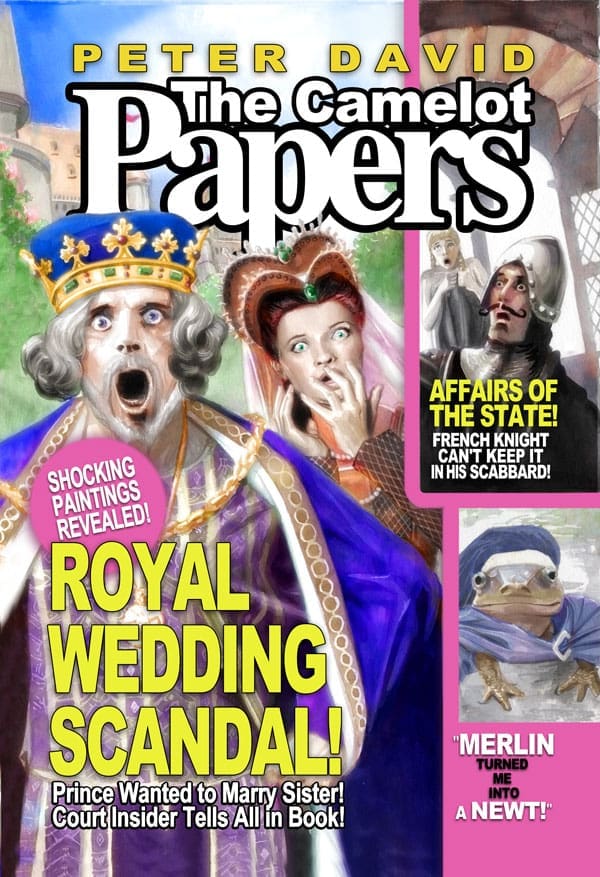
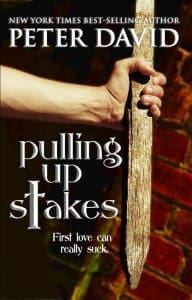
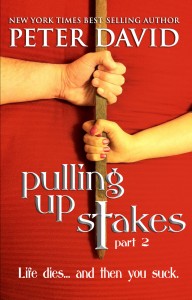
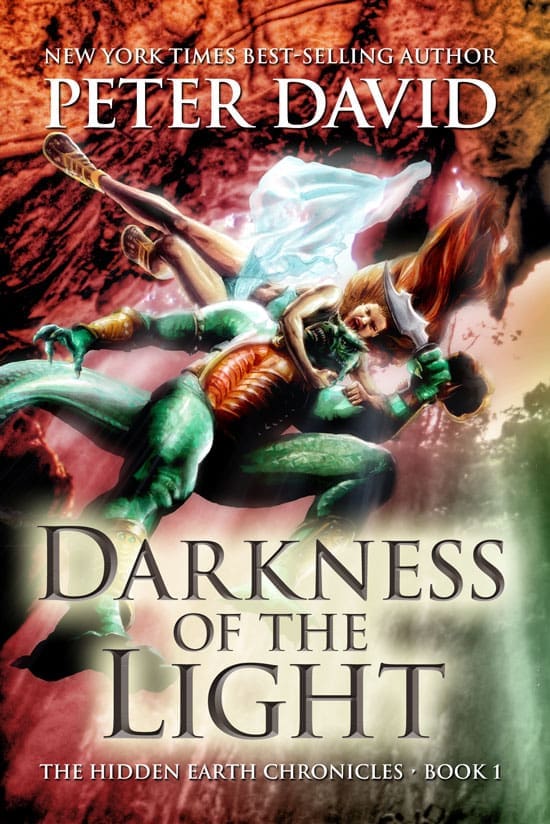
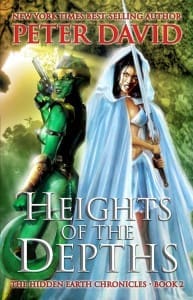
Any possibility of getting newer columns published on this website?
Eventually. But we are planning on doing these in order. Yes, we have a LOT to go through. But at one a day, we’re about 17 years behind… we’ll be caught up in about three years or so.
If you can’t wait, there will be a BUT I DIGRESS collection out in paper sooner than that.
Glenn is being discreet. I actually specifically instructed him to avoid more recent columns because we have a new collection coming out in a couple of months focusing mostly on columns from 2001 on. I didn’t want to run those columns here at the same time the book is coming out.
PAD
Wow, you pretty much encapsulated an entire year of my elementary ed courses in one post…
I had forgotten that Jerry Orbach was in B&B. I had to find a YouTube clip just to hear it.
Here’s another one of him though, that I stumbled onto while looking for the B&B clip. It’s from a 1988 White House dinner:
http://www.youtube.com/watch?v=L7nOkVz79Xw
My kid may type almost that fast but he made his keyboard do Dvorak.
Great post. I do a lot of public speaking but mostly to groups who want to hear what I am coming to say. It’s very tough to walk into a group who really has no clue what you are about to talk about or really doesn’t care and has been dragooned into being there.
2) “How long have you been writing comics?” (About six years).
A simple answer to keep things simple? Or do you view your comic book work before that to be merely “typing”? 😉
Okay, I see at the top of the page this is a reprint. But then I think, “It’s been almost 25 years of comic book writing for Peter David. I wonder what he thinks about being in the business for a quarter-century.” And I also wonder, “What does Peter David think are the high points and the low points of his writing career, both in comics and out.”
I’ve stolen your “you must be X graders” when I’ve had school groups visit my library.
Is Atlantis Chronicles still your favorite thing you’ve written, Pete?
Remember when the number “8” followed by a closed parentheses was not automatically assumed to be a smiley face wearing sunglasses? Good times.
8)
You would have been a great teacher, though I’m glad you didn’t go into the profession. There are things that can be done to get better teachers but the number of good writers will always be a small and finite number.
I missed the “originally published” line at first, and thought it rather strange to suggest Jerry Orbach losing sleep instead of… you know… rolling over in his grave or something.
Sounds like a great presentation for kids, though. I wish you’d come to my school back then!
This is great because in 1992 I was one of those school aged children you would have been talking to (would you have visited a west coast catholic school).
I love all of the references to my childhood: Ninja Turtles, Simpsons, 90’s Disney movies.
“It’s been a long road, gettin’ from there to here….”
I remember reading this when it first appeared in CBG, when my now-draft-age elder son was still in diapers, and you and I were both still in our thirties.
Do you still speak to elementary schools? Do you have any copies of “Little Mermaid” left? Can you still type that fast?
Anyway, thanks for helping to educate so many kids.
VERY cool, and I’m sorry our scholl had nothing like this.
A question, though: Do you ever change things around and make the kids Wonder Woman, a villain, and an adoring Steve Trevor?
(I ask because the plan is to make a kidlet in the next year [the office pool has us conceiving on the wedding night], and I’ve given much thought to the possibility of raising a girlchild. Kitty Pryde will be a big push: Smart, pretty, young, and she kicks a–
“Honey!”
Uh, yeah; and she kicks HINEY …)
Great insight, Peter, being able to explain what you do in a way that younger kids can understand. I used to love going with my wife when she did a talk for school kids; as a makeup artist, she knew that an instant way of establishing rapport was by teaching them how to make their own blood (edible of course), but they were equally excited about making vampire teeth, black eyes, cuts, bruises or pretty much anything that would freak their parents out. Not surprisingly, after a long and generally messy session, most kids would steadfastly refuse to clean themselves up!
Thanks! I sent this on to my cohorts in the Education biz. We’re gonna take all the good stuff educators have been saying about comics and teaching, and take it nationwide!
Does Mr. David still do his chalk talks?